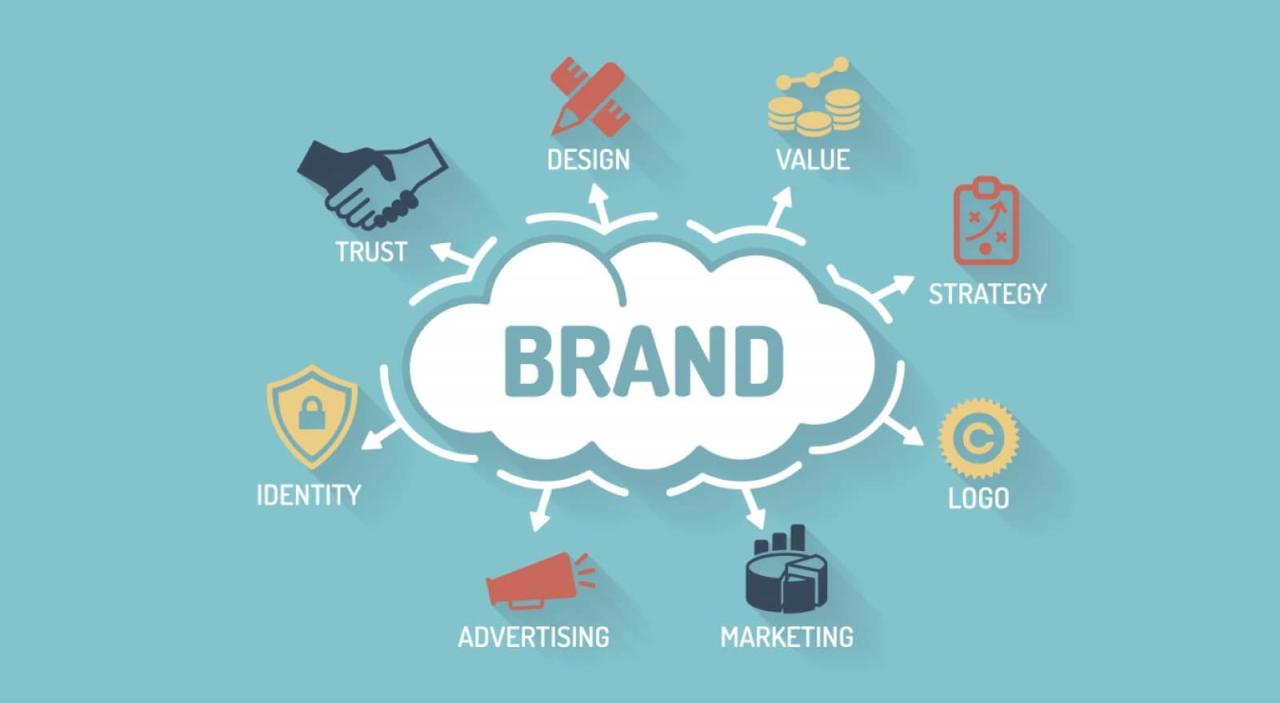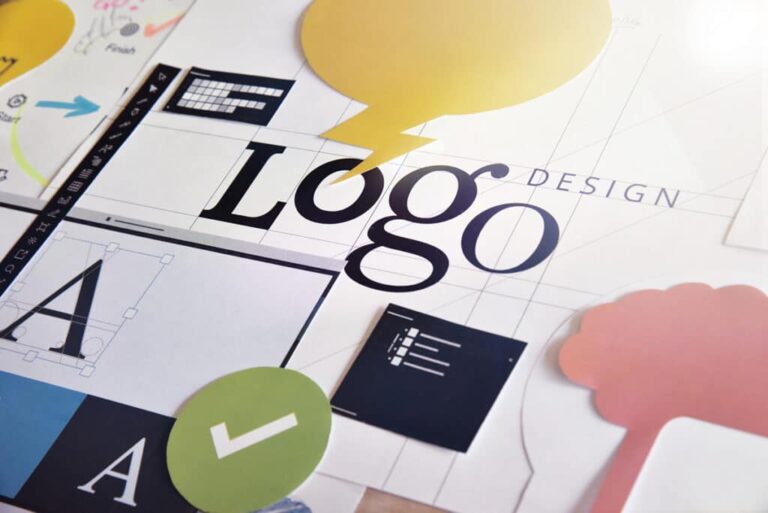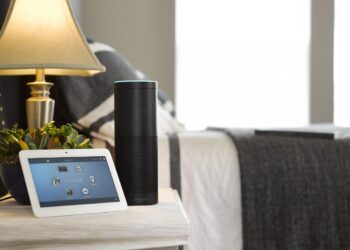Branding visual impact is the silent yet powerful language that defines a company, product, or service in the minds of its audience. Far more than just a logo, it’s the holistic sensory experience that communicates values, builds trust, and drives recognition in an increasingly crowded marketplace. This comprehensive article delves into the profound influence of visual elements in branding, exploring the psychological principles behind effective visual communication, highlighting groundbreaking trends, and forecasting future strategies. Understanding the nuances of visual impact isn’t just about creating pretty pictures; it’s about discerning the critical elements that lead to market differentiation, consumer loyalty. From a carefully chosen color palette to the consistent application of typography, the power of visual impact is ubiquitous and transformative, shaping perceptions and forging lasting connections.
Psychological Foundations of Visual Impact

The effectiveness of visual branding isn’t arbitrary; it’s rooted in deeply ingrained psychological principles that influence perception, emotion, and decision-making.
A. Color Psychology:
* Emotional Association: Different colors evoke specific emotions and associations. For example, blue often conveys trust and reliability, red signifies passion or urgency, green suggests nature and growth, and yellow can evoke optimism.
* Cultural Nuances: Color meanings can vary significantly across cultures. A color that is positive in one culture might be negative in another, requiring careful consideration for global brands.
* Brand Personality: Brands strategically choose color palettes that align with their desired personality (e.g., vibrant colors for a playful brand, muted tones for a sophisticated one).
* Contrast and Accessibility: Effective use of color contrast is crucial not only for visual appeal but also for accessibility, ensuring readability for individuals with visual impairments.
B. Shape and Form Perception:
* Geometric Shapes: Squares and rectangles often convey stability, structure, and professionalism. Triangles can suggest direction, energy, or hierarchy.
* Organic Shapes: Circles and rounded forms often evoke softness, unity, community, and comfort. Free-form, organic shapes can suggest naturalness, creativity, or fluidity.
* Brand Archetypes: Shapes can subconsciously align with brand archetypes (e.g., a strong, angular shape for a “Hero” brand, a rounded shape for a “Caregiver” brand).
* Negative Space: The clever use of empty space around a shape can create secondary meanings or enhance visual balance and clarity, drawing attention to the core message.
C. Typography and Readability:
* Font Personality: Different font styles convey distinct personalities. Serif fonts often suggest tradition, authority, and elegance. Sans-serif fonts typically convey modernity, simplicity, and accessibility. Script fonts evoke elegance or personal touch.
* Legibility and Readability: Beyond personality, the primary goal of typography is clear communication. Font size, line height, letter spacing (kerning), and contrast are crucial for ensuring text is easy to read and absorb.
* Hierarchy: Varied use of font weights, sizes, and styles helps establish a visual hierarchy, guiding the viewer’s eye through content and emphasizing key information.
* Consistency: Consistent use of chosen typefaces across all brand touchpoints reinforces brand recognition and professionalism.
D. Imagery and Symbolism:
* Emotional Resonance: Images are powerful tools for evoking emotions and telling stories quickly. High-quality, relevant imagery creates an immediate connection with the audience.
* Brand Storytelling: Images can convey a brand’s narrative, values, and purpose more effectively than words alone, creating memorable associations.
* Symbolic Meaning: The use of symbols (e.g., an apple for knowledge, a dove for peace) taps into shared cultural understanding, conveying complex ideas concisely.
* Authenticity and Diversity: A growing trend towards using authentic, diverse, and representative imagery that reflects the brand’s audience and values, fostering relatability and trust.
E. Consistency and Repetition:
* Brand Recognition: Consistent application of visual elements (logo, colors, fonts, imagery style) across all touchpoints (website, social media, packaging, advertising) builds strong brand recognition and recall.
* Trust and Familiarity: Consistent visuals create a sense of reliability and trustworthiness. Consumers feel more comfortable with brands they recognize and perceive as stable.
* Reduced Cognitive Load: When visuals are consistent, consumers don’t have to spend extra mental effort deciphering a brand, allowing them to focus on the message and offer.
* Brand Guidelines: Comprehensive brand guidelines (style guides) are essential for maintaining visual consistency across diverse teams and external partners.
Transformative Visual Impact Trends in Branding
The current landscape of branding is highly dynamic, driven by new technologies, evolving consumer expectations, and a desire for authenticity and engagement.
A. Dynamic and Animated Logos:
* Beyond Static: Moving beyond static logos, brands are adopting animated versions that add personality, convey a narrative, or provide interactive elements in digital spaces.
* Micro-interactions: Subtle animations that respond to user interaction (e.g., a logo that changes on hover) enhance engagement and delight.
* Brand Storytelling: Animations can visually tell a brand’s story in a concise and memorable way, especially suitable for video content and social media.
* Versatility: Designing animated logos that can adapt to various platforms, from website loading screens to social media intros and digital ads.
B. Inclusive and Authentic Imagery:
* Diverse Representation: A strong emphasis on showcasing genuine diversity in ethnicity, age, body type, ability, and lifestyle in all visual communications. This reflects a brand’s commitment to social responsibility and broadens appeal.
* Real People, Real Moments: Moving away from overly polished, generic stock photography towards more candid, relatable, and authentic imagery that resonates with everyday experiences.
* User-Generated Content (UGC): Brands are increasingly incorporating UGC into their visual strategies, as it feels more trustworthy and genuine to consumers, fostering community.
* Challenging Stereotypes: Brands actively seek to break down traditional stereotypes in their visual narratives, promoting progressive values.
C. Nostalgic Revivals (Reimagined):
* Retro-Futurism: Blending vintage aesthetics (e.g., 80s neon, 90s pixel art, Y2K bubblegum colors) with modern sensibilities to create a unique, often playful, and memorable visual style.
* Vintage Typography: A resurgence of classic serif fonts, groovy scripts, or bold display fonts from past decades, often paired with contemporary layouts for a fresh twist.
* Comfort in Familiarity: Nostalgia evokes a sense of comfort and familiarity, which can create positive emotional connections with consumers in uncertain times.
* Modern Filters: Reinterpreting past styles through a modern lens, avoiding mere imitation, but rather drawing inspiration for a fresh, updated feel.
D. Bold Typography as a Central Element:
* Statement Fonts: Typography itself becomes the primary visual focus, using oversized, highly customized, or uniquely expressive fonts to grab attention and convey personality.
* Kinetic Typography: Animated text that moves, morphs, or interacts, adding dynamism and impact to digital interfaces and video content.
* Variable Fonts: Utilizing variable font technology to create subtle, continuous variations in weight, width, and other properties, offering immense flexibility and unique typographic expressions.
* Hand-Drawn and Organic Lettering: A continued appreciation for personalized, imperfect, and humanistic lettering styles that convey authenticity and a handmade feel.
E. Minimalism with Expressive Touches:
* Refined Simplicity: While minimalism remains influential, it’s evolving to incorporate subtle yet impactful elements that add personality without clutter.
* Strategic Use of Color: Neutral palettes are often punctuated by a single, vibrant accent color that stands out and defines the brand’s energy.
* Emphasis on Texture and Materiality: In digital design, this translates to subtle gradients, soft shadows, and abstract textures that mimic physical materials, adding depth.
* Clean Layouts, Powerful Message: Minimalist layouts ensure clarity and direct focus on the core message, making every visual element count.
Impact of Visual Branding Across Business Functions

The influence of visual impact extends far beyond marketing, permeating various facets of business operations and strategic positioning.
A. Brand Identity and Market Differentiation:
* First Impressions: Strong visual branding creates an immediate and lasting first impression, shaping consumer perception before any verbal communication occurs.
* Memorability: Unique and consistently applied visual elements make a brand highly memorable, increasing recall when consumers are making purchasing decisions.
* Standing Out: In a crowded marketplace, distinctive visual branding helps a company differentiate itself from competitors, creating a unique market position.
* Perceived Quality: High-quality, polished visual branding often translates into a perception of higher product or service quality, even before actual experience.
B. Marketing and Advertising Effectiveness:
* Attention Capture: Visually compelling ads and marketing materials are more likely to grab consumer attention in a visually saturated digital landscape.
* Target Audience Resonance: Visuals can be tailored to appeal directly to the aesthetic preferences and cultural context of specific target demographics, increasing campaign effectiveness.
* Emotional Connection: Effective visual storytelling in advertising creates emotional connections with consumers, driving engagement and loyalty.
* Cross-Platform Adaptability: Visual branding must be designed to look consistent and impactful across diverse channels, from social media and websites to print ads and physical products.
C. User Experience (UX) and User Interface (UI):
* Intuitive Navigation: Clear visual hierarchy, consistent iconography, and intuitive layout in UI design guide users effortlessly through websites and applications.
* Trust and Credibility: A professional and cohesive visual UI instills trust in users, making them feel more comfortable interacting with digital products.
* Engagement and Delight: Thoughtful visual elements, micro-interactions, and animations can make digital experiences more engaging, enjoyable, and memorable.
* Brand Cohesion: Visual branding ensures that the digital interface feels like a seamless extension of the overall brand identity, reinforcing consistency.
D. Product Design and Packaging:
* Shelf Appeal: Visually impactful packaging design is crucial for standing out in retail environments, immediately conveying product benefits and brand personality.
* Unboxing Experience: The design of packaging creates a memorable “unboxing” experience, adding perceived value and delight.
* Product Aesthetics: The physical design and aesthetic of a product (e.g., sleek lines of a smartphone, texture of a speaker) are integral to its brand identity and desirability.
* Material Storytelling: Packaging can visually communicate a brand’s commitment to sustainability through the use of eco-friendly materials and minimalist design.
E. Corporate Culture and Employee Engagement:
* Internal Branding: A consistent and inspiring visual brand extends internally, fostering a sense of pride, belonging, and shared identity among employees.
* Workspace Design: The visual aesthetics of office spaces (colors, graphics, furniture) contribute to the overall work environment, impacting mood, creativity, and productivity.
* Talent Attraction: A strong visual brand and appealing company culture, as reflected in visual communications, can attract top talent who align with the brand’s values.
Challenges and Ethical Considerations in Visual Branding
While visual impact offers immense power, its implementation comes with significant challenges and ethical dilemmas that designers and brands must navigate responsibly.
A. Authenticity vs. Superficiality (Greenwashing, Woke-washing):
* Misleading Claims: The risk of brands using visual cues to convey positive values (e.g., sustainability, diversity) without genuine underlying practices, leading to consumer distrust.
* Brand Responsibility: The ethical imperative for brands to ensure their visual messaging is genuinely aligned with their actions and values.
* Avoiding Tokenism: Ensuring that diverse representation in visuals is authentic and integrated, rather than merely tokenistic or performative.
B. Accessibility and Inclusivity:
* Color Contrast: Poor color choices or insufficient contrast can make content illegible for individuals with visual impairments or color blindness.
* Typography Choices: Highly stylized or overly decorative fonts can hinder readability and accessibility.
* Image Descriptions: For visually impaired users, providing descriptive alternative text for images and visual elements is crucial for equitable access.
* Cultural Sensitivity: Ensuring visual imagery and symbolism are culturally appropriate and respectful across diverse global audiences, avoiding stereotypes or unintended offense.
C. Digital Overload and Visual Fatigue:
* Attention Economy: In a visually saturated digital world, brands face the challenge of cutting through the noise without resorting to overly aggressive or distracting visuals.
* Screen Fatigue: Excessive animation, bright colors, or busy layouts can contribute to visual fatigue and overwhelm users, potentially leading to negative brand associations.
* Ethical Engagement: Designing visuals that genuinely engage and inform, rather than relying on manipulative or attention-seeking tactics.
D. Data Privacy and Personalization Ethics:
* Targeted Visuals: The use of AI and data to deliver highly personalized visual ads and content raises concerns about consumer privacy and potential manipulation.
* Data Transparency: Brands need to be transparent about how user data is collected and used to personalize visual experiences.
* Bias in AI-Generated Visuals: As AI tools become more prevalent, ensuring that AI-generated imagery used in branding is free from inherent biases present in training data.
E. Maintaining Consistency Across Platforms:
* Brand Dilution: The challenge of maintaining a consistent visual brand identity across numerous and ever-evolving digital and physical touchpoints without diluting its core message.
* Platform Specifics: Adapting visual elements for optimal performance and appearance on different platforms (e.g., social media aspect ratios, website loading speeds, print quality).
* Global vs. Local: Balancing a consistent global brand identity with local cultural nuances and preferences in visual communication.
The Evolving Role of the Branding Designer
The branding designer of today and tomorrow is a highly strategic, multidisciplinary professional, blending artistic vision with psychological insight, technological fluency, and a deep sense of social responsibility.
A. Strategic Visionary:
* Business Acumen: Understanding business goals, market dynamics, and how visual branding directly contributes to revenue, market share, and long-term brand equity.
* Brand Storyteller: Translating complex brand narratives, values, and missions into compelling and emotionally resonant visual languages.
* Market Differentiator: Identifying opportunities for unique visual positioning that helps a brand stand out in a competitive landscape.
B. Psychological Expert:
* Color and Form Psychology: Deep understanding of how visual elements impact human perception, emotion, and behavior.
* User Experience (UX) Principles: Applying UX principles to visual interface design to ensure intuitiveness, clarity, and delight in digital brand touchpoints.
* Behavioral Insights: Using insights from behavioral science to design visuals that subtly guide consumer decision-making.
C. Technological Integrator:
* Digital Branding Mastery: Proficiency in creating dynamic logos, animated visuals, 3D elements, and interactive experiences for digital platforms.
* AI Collaboration: Understanding how to leverage AI tools for ideation, visual asset generation, and personalized content creation while maintaining creative control.
* Cross-Platform Adaptation: Designing visuals that are optimized for various digital and physical mediums, from web and mobile to print and experiential spaces.
D. Ethical Advocate:
* Inclusive Design Champion: Ensuring that visual branding is accessible and representative of diverse audiences, promoting equity and belonging.
* Sustainable Practices: Advocating for eco-friendly materials and production processes in physical branding (e.g., packaging, signage).
* Responsible AI Use: Addressing potential biases in AI-generated visuals and ensuring ethical data practices in personalized branding.
E. Brand Guardian and System Designer:
* Consistency Manager: Developing comprehensive brand guidelines and systems that ensure visual consistency across all touchpoints, regardless of who is implementing them.
* Adaptable Systems: Designing visual identity systems that are flexible enough to evolve over time and adapt to new trends and technologies without losing their core essence.
* Auditing and Evolution: Continuously monitoring brand performance and visual impact, making data-driven adjustments to ensure long-term relevance and effectiveness.
Conclusion
The visual impact of branding is an undeniable force, shaping perceptions, forging connections, and driving commercial success in our visually-driven world. By strategically harnessing the power of color, shape, typography, and imagery, and by embracing dynamic elements, authentic representation, and cutting-edge technology, brands are crafting narratives that resonate deeply with consumers. The future promises a branding landscape where visual identities are not just static emblems but living, evolving experiences that adapt to individual preferences, engage across immersive platforms, and communicate values with unparalleled clarity. For designers and businesses, this era presents immense opportunities to innovate, differentiate, and leave an indelible mark on culture, proving that the art of visual branding is truly the art of meaningful connection.










